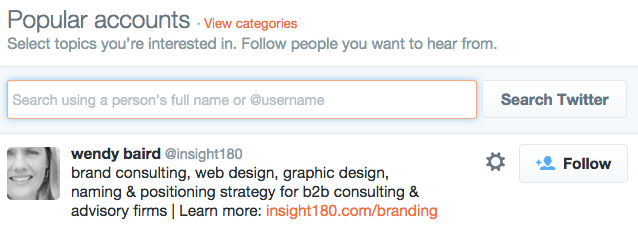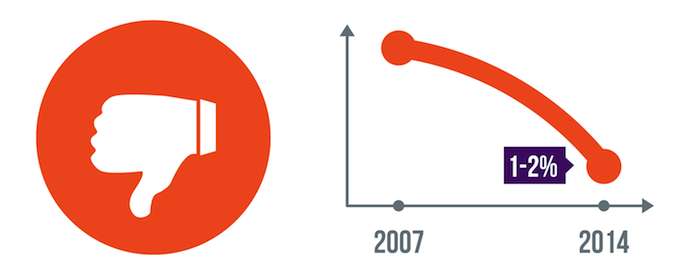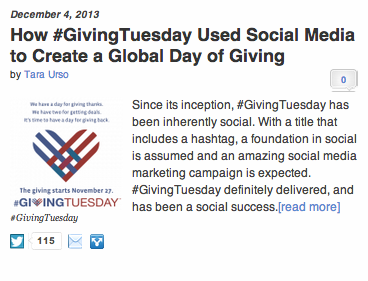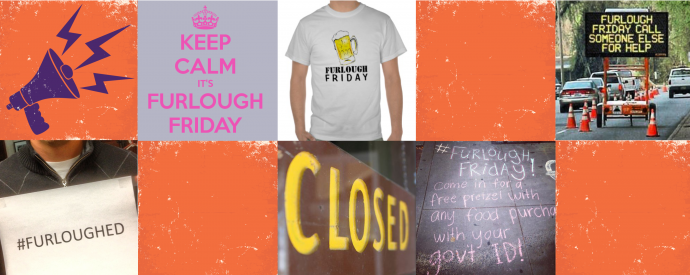
As a small business owner, consultant or upper-level manager in a professional services firm, you’re busy, and each day, more and more demands are made on your time. Your company made the dive into social media, and now your agency tells you that you got a negative review on Facebook or some suspect comments on your blog. So you’re thinking, “why did we ever say we would do this social media in the first place?” Well, it’s because you also want to reach more people, be known as a thought leader, and more than that, have an engaged audience. But what happens if you’ve got that “one bad apple” among lots of healthy, positive engagement?
Negative comments can do some good. How?
If you are called out on something, chances are there may be some truth to the matter. Don’t you want to know if a customer has a complaint or disagreement. Even if it’s an opinion only, you are given an opportunity to address it. Think about it. . . it’s not being said “behind your back.” You have the ability to engage—if necessary apologize and correct—or at the very least, clarify.
So what are the essential tips in responding to negative comments on social media?
1. Always respond. It’s your company’s duty to respond. Conversation between an audience and an organization on social media is the epitome of transparency. You don’t want to give the impression that you have something to hide. Responding in a positive manner and showing that you care about your audience is the best route to take.
For example, say you own a bakery and on your company’s Facebook page someone says, “I hate your chocolate chip cookies!” Well, they’re entitled to their opinion but, you know that there are many audience members who LOVE your chocolate chip cookies. This just isn’t fair to your brand to have your cookies tarnished. Respond politely with something like, “Sorry to hear that. Most of our customers RAVE about our chocolate chip cookies. Have you tried our lemon drop cookies? We also have oatmeal raisin cookies, which are equally delicious.”
This hypothetical situation about cookies can be applied to most products or services. Just state that most of your clients LOVE what you provide. Sorry that you didn’t. How can we help?
Another option for negative comments is to allow your community to respond. If you have an active online community who loves your organization, they won’t let this negative commenter get away with it. If you’re inclined, wait it out a bit before replying. Most likely, someone in your audience will step up and say “What!? I love their cookies.”
Of course there are always exceptions. Some comments should be removed and not responded to:
- Random attacks that are completely invalid or don’t make sense
- Profanity
- Spam
Remember, your social media page is YOURS. You have the right to delete anything that will be detrimental to your brand. As long as the negative comment is not a truth that you should really address anyway, feel free to delete. Your audience will only mind that you’re deleting things if you are trying to hide something. If that is the case be prepared for your audience to act accordingly. Companies deleting truthful comments are only showing their audience that they aren’t to be trusted. Whether or not to delete the comment is a dilemma which you need to address on a comment-by-comment basis.
2. Contact the commenter privately. Whether on Twitter or Facebook, you can contact the negative follower by direct message. Try to have a conversation about a problem in private. If it’s not possible because the follower is not cooperating, show that you’re doing all you can to resolve the problem by having a cautious public conversation. Two companies who constantly try to first, show everyone that they are interested in resolving the situation and second, try to divert the conversation to a private space are Comcast and Verizon. If you mention either of their names on Twitter, these companies will respond— and fast. Just for example’s sake I had a staff member tweet about an instance of slow connection time on her Verizon internet service (she really does like Verizon and feels it’s usually pretty fast!) and Verizon responded in just five minutes.
Something Verizon also does is take the conversation from its main account (@Verizon) and to (@VerizonSupport), which is a great move.
3. If the negativity continues, try to resolve and ask the commenter to consider removing the post. If you’re able to have a private conversation, see if the original commenter would mind removing the post. If their original problem is taken care of this should be no problem.
4. Ban or block them. If after the previous steps, a user is causing nothing but trouble, feel free to ban or block them. It’s easy to do on both Facebook and Twitter. If the commenter continues to be aggressive, uses expletives or uses racial or cultural slurs, banning or blocking is an appropriate course of action. Keep in mind, friends of the “banned commenter” may still be able to see their posts, but new page followers usually won’t (unless they are already connected to the comment maker).
5. Keep posting your great content. You’d be amazed at how consistent educational, informative and inspirational posts and efficiently good press can outweigh anything bad. Although a customer or former disgruntled employee may be complaining about you on Facebook, if you keep your Facebook updated with all the positive things you’re up to, including that “Best Place to Work” award you’ve gotten for the fifth year in a row, or your excellent HR department, or your client success stories, it really shows the overall picture.
What if a comment comes from an employee?
One thing to remember on all accounts is you can do your best to try to manage your reputation, but you cannot control other people’s behavior. We are human. We make mistakes. Sometimes our employees make bad choices— even the “seasoned” ones. Remember the PR executive who tweeted an offensive comment about race and AIDS?
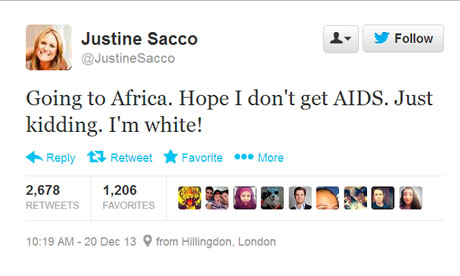
The company she represented immediately responded by firing her. And yet, we want to encourage our employees to make responsible use of social media as often as we can. One way to encourage involvement and mitigate risk is to develop guidelines.
6. Develop social media guidelines. In light of examples like the one above, companies are grappling with how to handle botched tweets or responses from company representatives that didn’t represent them well, as well as less-than-happy customers or a former disgruntled employee’s venomous tweets or Facebook posts. Many industries have strict privacy and policy codes (i.e. the financial industry, healthcare providers) , and others are making headlines for demanding potential employees’ Facebook user names and passwords, which seems a bit extreme.
Guidelines are essential. What may seem like common sense to some, is foreign to others, so spell it out. The Society for Human Resource Managers (SHRM) has a great article on this. Some organizations and institutions spell out in great detail, the expectations around social media, although
Skidmore College called it “advice”
READ MORE






